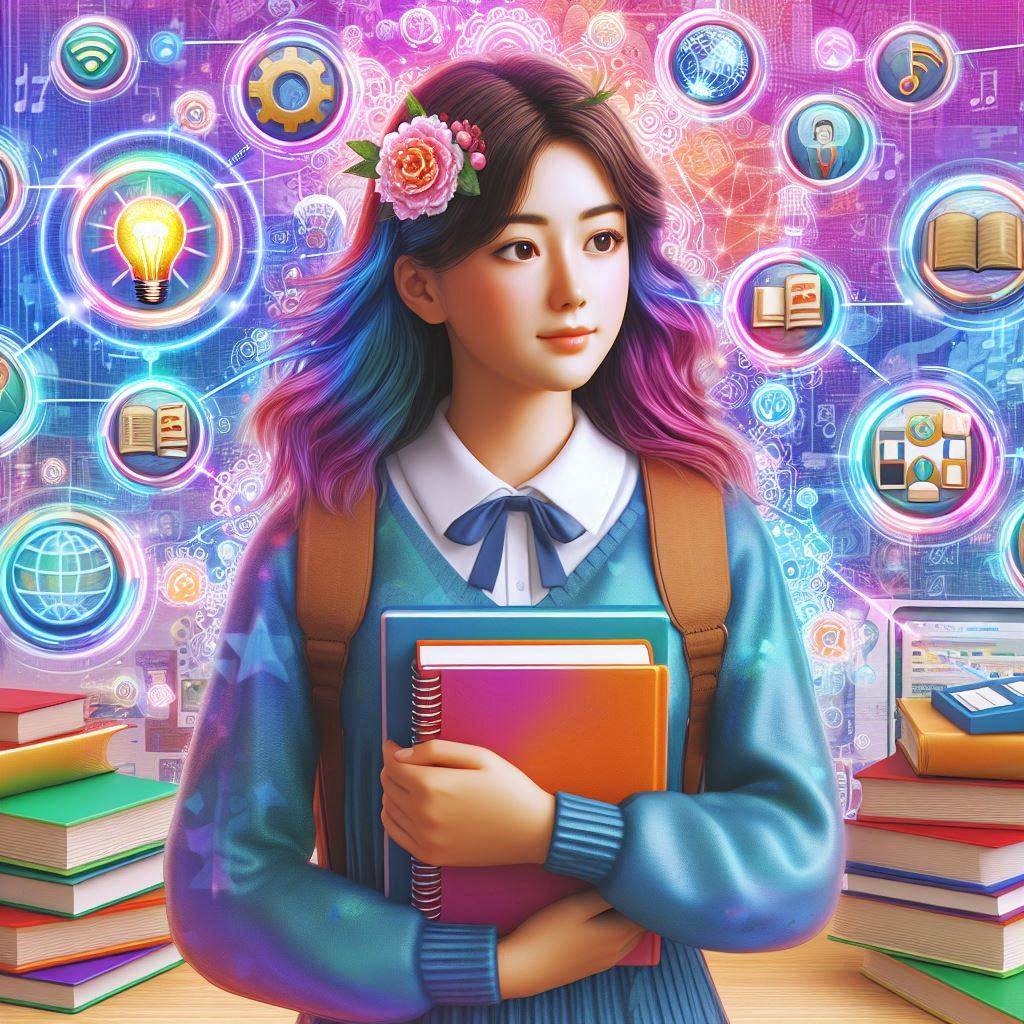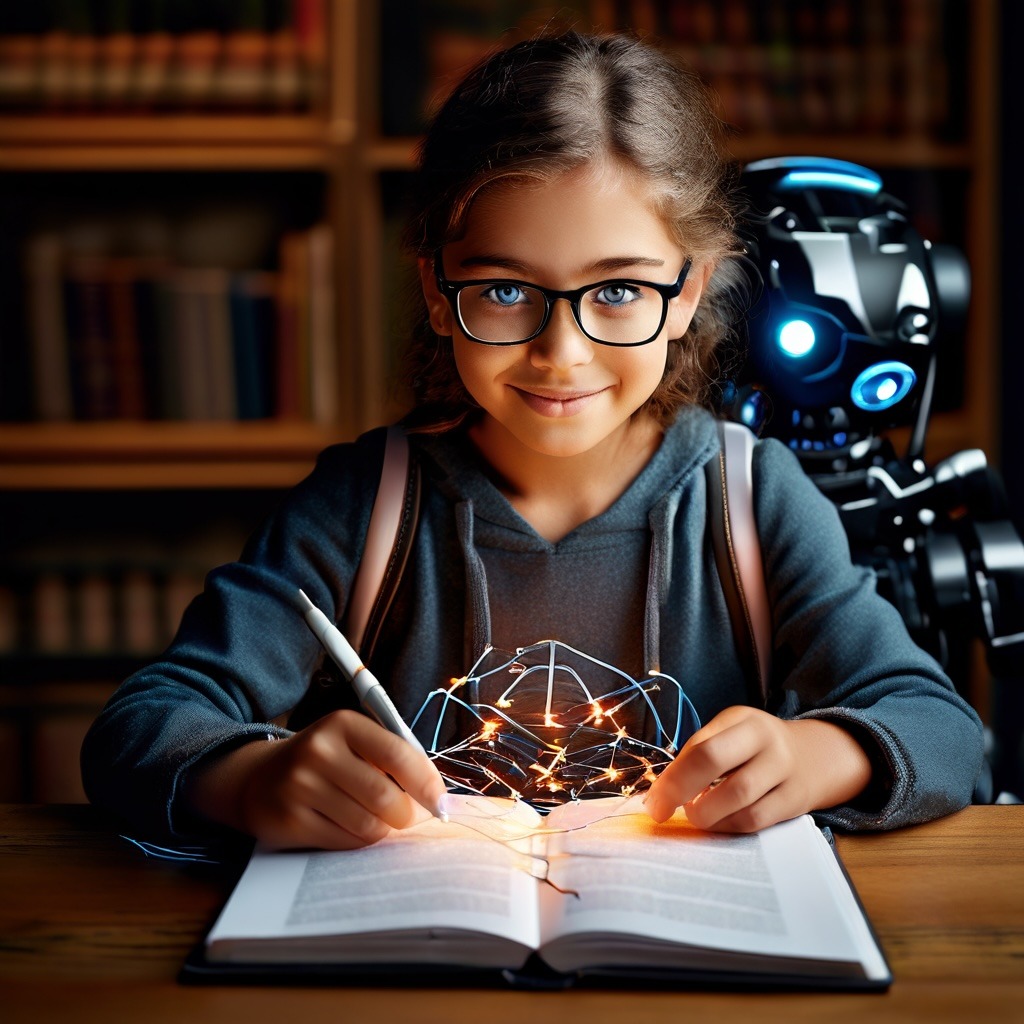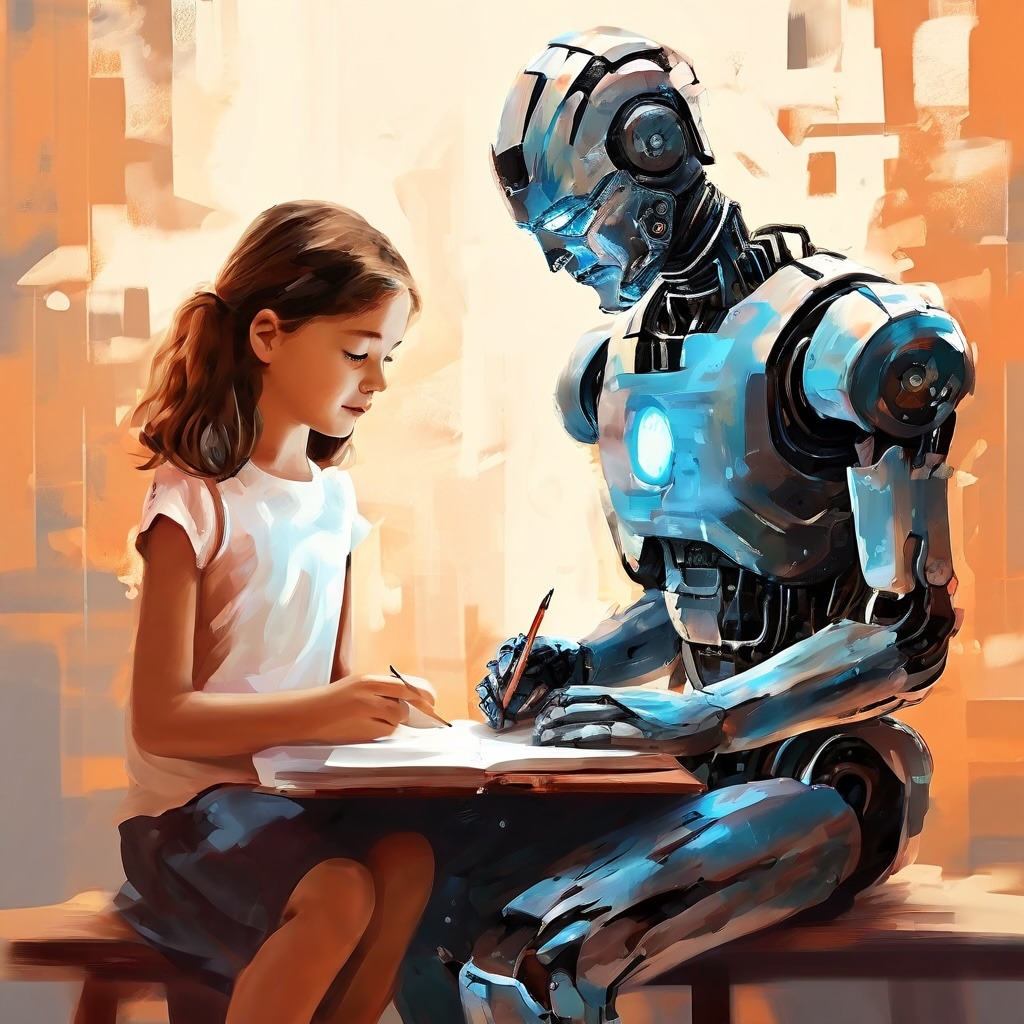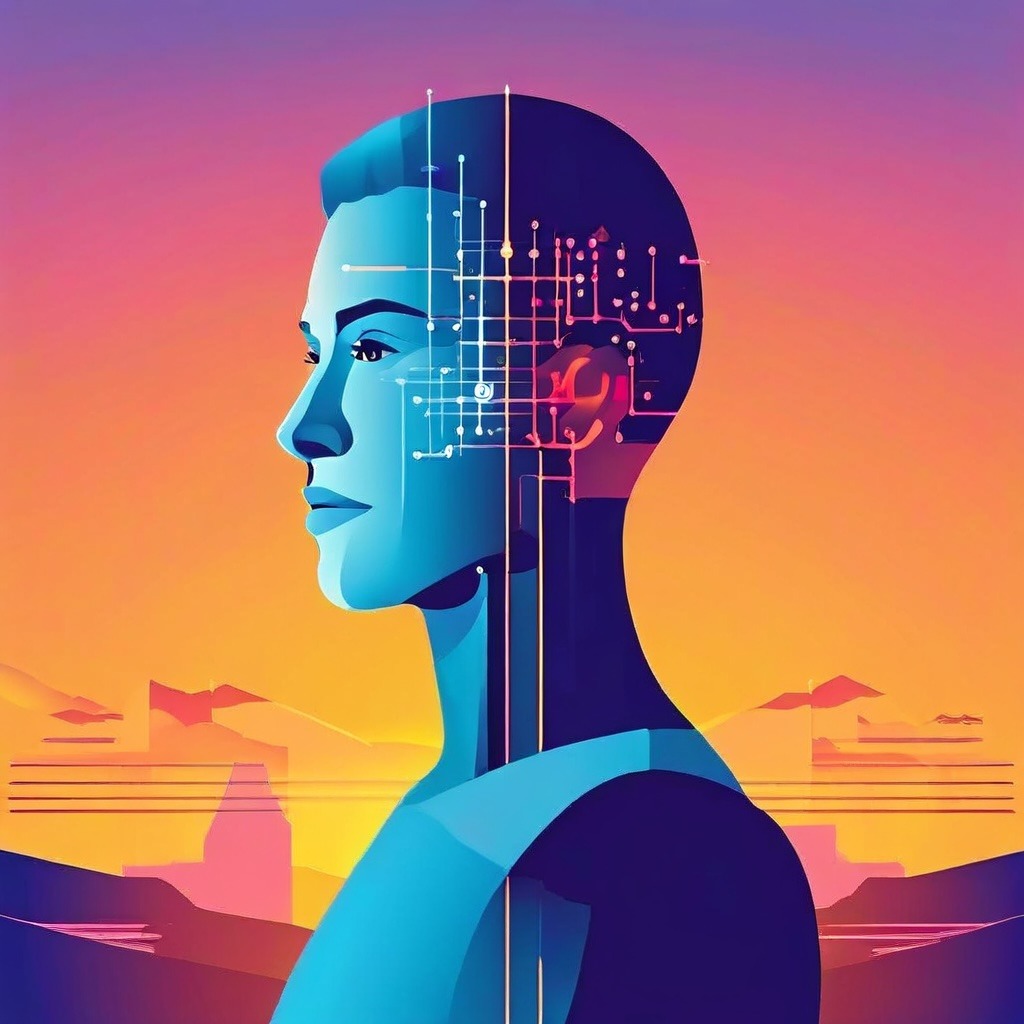Using AI in Education Use Case 4:10 – Smart Content Creation & Curation

How AI is Revolutionizing Education: Your Teaching Assistant for Smart Content
Are you a teacher looking to streamline lesson planning, create engaging content, and personalize learning for your students? Look no further than Artificial Intelligence (AI). This powerful technology is transforming education, offering teachers a suite of tools to enhance every aspect of their work. In this post, we’ll delve into the world of AI for teachers, exploring how it can revolutionize content creation and curation, saving you valuable time while elevating the learning experience for your students.
Content Creation and Curation for Teachers
As a teacher, one of the most time-consuming and challenging aspects of my job is creating and curating high-quality educational content for my students. From designing lesson plans and presentations to finding supplemental materials, readings, and activities, the process of developing engaging and effective content can be incredibly labor-intensive. However, recent advancements in artificial intelligence (AI) have opened up a world of possibilities for streamlining and enhancing content creation and curation in the classroom. In this post, I’ll explore how leveraging AI can transform the way we approach educational content, saving teachers valuable time while elevating the learning experience for our students.
AI-Assisted Content Creation
One of the most promising applications of AI in education is its ability to assist with content creation. AI-powered writing tools, for instance, can help teachers draft lesson plans, create presentations, and even generate personalized learning materials tailored to individual student needs and learning styles. These tools can analyze existing educational content, identify key concepts and topics, and then automatically generate new materials that reinforce and expand upon those ideas.
For example, an AI writing assistant could take a set of learning objectives for a particular unit and generate a comprehensive lesson plan complete with engaging activities, multimedia resources, and formative assessments. Additionally, AI can help teachers create differentiated content for students at various skill levels, ensuring that each learner receives materials that are appropriately challenging and support their unique needs.
AI-Powered Content Personalization
Building upon its content creation capabilities, AI can also personalize educational materials for individual students. By analyzing data on student performance, learning preferences, and engagement levels, AI systems can tailor content to match each student’s unique strengths, weaknesses, and interests. This level of personalization has the potential to significantly enhance the learning experience, keeping students more engaged and motivated while ensuring that they receive instruction that is optimized for their individual needs.
For instance, an AI-powered adaptive learning platform could continuously monitor a student’s progress and adjust the difficulty level, pacing, and format of instructional materials accordingly. If a student is struggling with a particular concept, the AI could automatically generate additional practice exercises, supplemental readings, or interactive simulations to reinforce that topic. Conversely, for students who quickly grasp new material, the AI could provide more advanced content and challenging activities to keep them engaged and prevent boredom.
Automated Content Curation
In addition to creating and personalizing content, AI can also be a powerful tool for curating educational resources. With the vast amount of information available online, finding high-quality, relevant, and age-appropriate materials can be a daunting task for teachers. AI-powered content curation tools can streamline this process by automatically searching the web, evaluating the quality and appropriateness of resources, and compiling them into organized collections based on specific topics, learning objectives, or student needs.
For example, an AI content curation system could be trained to identify reputable sources, assess the readability and complexity of materials, and filter out inappropriate or low-quality content. It could then present teachers with a curated collection of articles, videos, simulations, and other resources that align with their instructional goals and their students’ level of understanding.
Moreover, AI-powered content curation can go beyond simply collecting resources. These systems can also analyze and summarize key information from various sources, providing teachers with concise overviews and distillations of complex topics. This can save teachers significant time and effort in researching and synthesizing information from multiple sources.
Intelligent Content Recommendation
Another powerful application of AI in content curation is intelligent content recommendation. Similar to how streaming platforms like Netflix and Spotify use AI to suggest personalized content based on user preferences and behavior, AI-powered recommendation systems can suggest relevant educational resources to teachers and students based on their interests, learning goals, and previous engagement with materials.
For teachers, an AI recommendation system could analyze their past content selections, lesson plans, and student performance data to suggest new resources, activities, or teaching strategies that may be effective for their specific classroom. This could help teachers discover new materials and approaches they may not have been aware of, expanding their repertoire and keeping their lessons fresh and engaging.
For students, an AI recommendation system could provide personalized suggestions for supplemental resources, practice exercises, or even extracurricular activities that align with their learning goals, interests, and areas where they may need additional support. By tailoring recommendations to individual learners, these systems can promote self-directed learning and help students take an active role in their own educational journey.
Challenges and Considerations
While the potential benefits of leveraging AI for content creation and curation are significant, it’s important to acknowledge and address some of the challenges and considerations that come with this technology.
One major concern is the risk of perpetuating biases or inaccuracies present in the data used to train AI systems. If the training data contains inherent biases or misinformation, the AI’s output may reflect and amplify those issues. As educators, it’s crucial to be vigilant in evaluating the content generated or curated by AI systems to ensure its accuracy, objectivity, and appropriateness for educational settings.
Another consideration is the potential impact of AI on student creativity and critical thinking skills. While AI-generated content can be highly informative and engaging, there is a risk that overreliance on such materials may limit opportunities for students to develop their own creative problem-solving abilities and independent thought processes. As teachers, we must strike a balance between leveraging AI’s capabilities and ensuring that students have ample opportunities to exercise their own cognitive skills and creative expression.
Additionally, the use of AI in education raises ethical concerns around data privacy and security. As AI systems collect and analyze data on student performance, learning preferences, and personal information, it’s imperative that robust safeguards are in place to protect student privacy and prevent the misuse of sensitive data.
Finally, it’s important to recognize that AI is a tool, not a replacement for human teachers. While AI can automate and enhance many aspects of content creation and curation, the role of the teacher in providing guidance, feedback, and human connection remains invaluable. Effective integration of AI into education requires a thoughtful approach that leverages the strengths of both technology and human expertise.
Embracing the Future of Content Creation and Curation
Despite the challenges and considerations, the potential benefits of using AI for content creation and curation in education are too significant to ignore. By harnessing the power of AI, teachers can streamline their workflow, personalize instruction, and provide students with more engaging and effective learning materials.
As AI technology continues to advance, we will likely see even more innovative applications in the realm of educational content. Imagine virtual reality simulations generated by AI, allowing students to immerse themselves in historical events or scientific concepts. Or AI-powered language learning tools that can provide real-time feedback and personalized instruction based on a student’s spoken and written responses.
The possibilities are endless, and as educators, it’s our responsibility to stay informed about these emerging technologies and explore how we can leverage them to enhance the learning experience for our students. While we must remain mindful of the challenges and ethical considerations, embracing AI as a tool for content creation and curation can help us better meet the diverse needs of our learners and prepare them for success in an increasingly technology-driven world.
AI in Education: Your Teaching Assistant for Smart Content
As teachers, we constantly strive to create engaging and effective learning experiences. It’s a challenge that demands time, creativity, and a deep understanding of our students. Enter Artificial Intelligence (AI) – a game-changer that’s revolutionizing how we approach content creation and curation.
In this post, we’ll dive into the world of AI tools designed to make our lives easier and our lessons more impactful. We’ll explore how AI can be your trusted teaching assistant, helping you streamline your workflow, personalize learning, and spark curiosity in your students.
Unleashing the Power of AI: A Teacher’s Toolkit
AI offers a versatile range of tools to enhance your content creation and curation process. Here’s how you can leverage AI in your classroom:
Effortless Lesson Planning
AI-powered curriculum builders: These platforms generate customized lesson plans based on your subject, grade level, and learning objectives. They can save you hours of research and preparation, leaving you more time to focus on teaching.
Content suggestion engines: These tools analyze your existing curriculum and suggest additional resources, activities, or assessments to enrich your lessons.
Engaging Content Creation
AI writing assistants: These tools help you create clear, concise, and engaging educational content. They can suggest vocabulary, grammar corrections, and even generate summaries of complex texts.
Presentation generators: Transform your lesson plans into visually appealing presentations with the click of a button. AI presentation tools can incorporate relevant images, videos, and interactive elements.
Quiz and worksheet creators: Automate the process of creating quizzes and worksheets that align with your learning objectives. AI can even analyze student responses and provide insights for targeted feedback.
Personalized Learning
Adaptive learning platforms: These platforms use AI to tailor learning experiences to individual student needs. They can identify areas where students need additional support and provide targeted practice or resources.
Content recommendation engines: Suggest relevant readings, videos, or activities based on students’ interests and learning styles. This can boost engagement and make learning more enjoyable.
Interactive Learning Experiences
AI-powered chatbots: Create virtual tutors to answer student questions, provide feedback, or offer additional support outside of class hours.
Virtual reality (VR) and augmented reality (AR) experiences: AI can enhance VR and AR experiences, making them more interactive and educational. Students can explore historical events, scientific concepts, or foreign cultures in immersive ways.
Navigating the AI Landscape: Tips for Teachers
As with any new technology, there are considerations to keep in mind when integrating AI into your classroom:
Choose the Right Tools: Not all AI tools are created equal. Research and select tools that align with your teaching style and curriculum goals.
Start Small: Don’t feel pressured to overhaul your entire curriculum overnight. Begin by incorporating AI tools gradually into your existing lessons.
Prioritize Privacy and Security: Ensure that any AI tools you use comply with privacy regulations and protect student data.
Stay Informed: AI is a rapidly evolving field. Keep up with the latest developments and explore new tools as they become available.
Maintain a Human Touch: While AI can be a powerful tool, it’s important to remember that it can’t replace the human connection and personalized guidance that teachers provide.
Addressing Common Concerns: A Teacher’s Perspective
As a teacher, I understand some of the concerns that might arise when considering AI in education:
Will AI replace teachers? Absolutely not. AI is a tool that can enhance our teaching, not replace it. We’ll always be needed to provide guidance, mentorship, and emotional support to our students.
Is AI too expensive? Many AI tools offer free or affordable options for educators. There are also grants and funding opportunities available to support schools in adopting AI technology.
Will AI worsen the achievement gap? While there is a risk that AI could exacerbate existing inequities, it can also be a powerful tool for closing the achievement gap. By providing personalized learning experiences and additional support, AI can help all students reach their full potential.
The Future of AI in Education: A Teacher’s Vision
I envision a future where AI and teachers work hand in hand to create dynamic, engaging, and inclusive learning environments. AI will free us from tedious tasks, allowing us to focus on what we do best – inspiring and empowering our students.
Let’s Embrace the Possibilities!
The possibilities of AI in education are limitless. Let’s embrace this technology as a valuable ally in our mission to prepare our students for a bright and successful future.
I encourage you to explore the AI tools available and discover how they can transform your teaching experience. Let’s leverage the power of AI to create a brighter future for education – one where all students have the opportunity to thrive.
Using AI in Education: A Teacher’s Perspective on Smart Content Creation and Curation
What is Smart Content Creation and Curation?
Smart Content Creation involves using AI to generate educational materials such as quizzes, flashcards, lecture notes, and even entire lesson plans. These AI systems can analyze existing content, student performance data, and curricular standards to produce customized materials that cater to the unique needs of each classroom.
Smart Content Curation, on the other hand, refers to the process of using AI to sift through vast amounts of educational resources available online and select the most relevant, high-quality content. This includes articles, videos, interactive modules, and other learning aids. AI can curate these resources based on various parameters, such as relevance to the curriculum, difficulty level, and student interests.
In the evolving landscape of education, artificial intelligence (AI) has emerged as a transformative force, promising to reshape how we approach teaching and learning. Among its myriad applications, smart content creation and curation stand out as particularly impactful. As a teacher, embracing these AI-driven innovations can not only enhance your instructional methods but also significantly improve student engagement and learning outcomes. This blog post delves into the practicalities, benefits, and considerations of using AI for smart content creation and curation from a teacher’s perspective.
The Evolution of Educational Content
Traditionally, educational content creation has been a labor-intensive process. Teachers spend countless hours designing lesson plans, creating assignments, and curating resources. While this hands-on approach ensures that the content is tailored to the specific needs of students, it also poses significant challenges in terms of time management and resource allocation. This is where AI steps in, offering tools that can automate and optimize various aspects of content creation and curation.
Benefits of AI in Content Creation and Curation
Personalization of Learning Materials
One of the most significant advantages of using AI in education is the ability to personalize learning materials. AI can analyze individual student data, including their strengths, weaknesses, learning styles, and preferences. This enables the creation of tailored content that addresses the specific needs of each student, thereby enhancing their learning experience.
For instance, if a student struggles with a particular math concept, the AI can generate additional practice problems focused on that area, along with step-by-step solutions to help the student understand the material better. Conversely, for students who excel, the AI can provide more challenging problems to keep them engaged and stimulated.
Time Efficiency for Teachers
The automation of content creation and curation can save teachers a considerable amount of time. Instead of spending hours developing lesson plans or searching for supplementary materials, teachers can rely on AI to perform these tasks swiftly and accurately. This allows educators to focus more on instructional delivery and student interaction, which are critical components of effective teaching.
For example, an AI-powered platform might generate a weekly quiz based on the topics covered in class, complete with answer keys and feedback explanations. This not only reduces the workload for teachers but also ensures that assessments are aligned with the curriculum and tailored to student needs.
Access to Up-to-Date Resources
AI-driven content curation ensures that teachers and students have access to the most current and relevant educational resources. Given the rapid pace at which information evolves, particularly in fields like science and technology, staying updated can be challenging. AI can continuously scan academic journals, educational websites, and other sources to curate the latest and most pertinent materials.
This dynamic approach to resource curation means that students are always learning from the most recent and relevant content, which can significantly enhance the quality of education they receive.
Enhanced Student Engagement
Interactive and multimedia-rich content can significantly boost student engagement. AI can curate a variety of content types, including videos, simulations, and interactive modules, which can make learning more engaging and enjoyable for students. By incorporating diverse types of content, teachers can cater to different learning styles and keep students interested in the subject matter.
For instance, a history teacher might use AI to find interactive timelines, documentary clips, and primary source documents that make historical events come alive for students. This variety not only makes lessons more engaging but also helps students retain information better.
Practical Applications in the Classroom
AI-Powered Lesson Planning
AI can assist teachers in creating comprehensive lesson plans by analyzing the curriculum and generating content that aligns with learning objectives. For example, platforms like IBM Watson and Google AI offer tools that can help teachers design lesson plans that integrate multimedia content, interactive activities, and assessment tools.
By inputting the desired learning outcomes and topics, teachers can receive detailed lesson plans complete with recommended resources and activities. This not only saves time but also ensures that the lessons are well-rounded and engaging.
Customized Assessments
Creating assessments that accurately measure student understanding is a complex task. AI can generate quizzes, tests, and other assessment tools that are customized to the learning level and progress of each student. Tools like Quizlet and Kahoot! use AI to create adaptive quizzes that adjust in difficulty based on student performance.
This adaptive approach ensures that assessments are neither too easy nor too difficult, providing a more accurate measure of student learning and areas that need improvement.
Curating Supplementary Materials
AI can curate supplementary materials that enhance the core curriculum. For instance, if a biology teacher is covering cellular respiration, the AI might suggest supplementary videos, articles, and interactive simulations that provide additional explanations and visualizations of the process.
This curated approach ensures that students have access to a diverse range of resources that can deepen their understanding and cater to different learning preferences.
Enhancing Collaboration
AI can also facilitate collaboration among teachers by curating content that can be shared and adapted across different classrooms. Platforms like Edmodo and Microsoft Teams integrate AI to recommend resources and facilitate communication and collaboration among educators.
This collaborative approach allows teachers to share best practices, resources, and insights, ultimately enhancing the quality of education across the board.
Challenges and Considerations
While the benefits of using AI for smart content creation and curation are substantial, it is essential to consider the potential challenges and limitations.
Quality Control
Ensuring the quality and accuracy of AI-generated and curated content is crucial. Teachers must review and verify the materials to ensure they meet educational standards and are appropriate for their students. While AI can significantly reduce the workload, it is not infallible and may occasionally suggest irrelevant or incorrect resources.
Data Privacy
The use of AI in education involves collecting and analyzing student data. It is vital to ensure that this data is handled securely and that student privacy is protected. Schools and educators must be transparent about how data is used and comply with regulations such as the Family Educational Rights and Privacy Act (FERPA).
Teacher Training
Effective implementation of AI tools requires proper training for teachers. Educators must be comfortable using AI-driven platforms and understand how to integrate them into their teaching practices. Professional development programs and ongoing support are essential to ensure that teachers can leverage AI effectively.
Equity and Access
There is a risk that the benefits of AI in education may not be equally accessible to all students, particularly those in underfunded schools or regions with limited technological infrastructure. Ensuring equitable access to AI tools and resources is crucial to prevent widening the educational divide.
To Summarize
From a teacher’s perspective, the integration of AI in smart content creation and curation holds tremendous promise for enhancing educational outcomes. By personalizing learning materials, saving time, providing up-to-date resources, and boosting student engagement, AI can significantly transform the teaching and learning experience.
However, it is essential to approach this transformation thoughtfully, addressing challenges related to quality control, data privacy, teacher training, and equity. By doing so, educators can harness the power of AI to create a more dynamic, efficient, and inclusive educational environment.
As we look to the future, the potential of AI in education is vast and continually evolving. For teachers willing to embrace this change, the rewards are manifold: enhanced teaching efficiency, improved student learning experiences, and a step forward into the future of education. The journey towards integrating AI in education is just beginning, and the possibilities are as they are endless.
HERE you find a summary of the EduTech use cases The Missing Prompt will write about.
HERE is an interesting LinkedIn post




